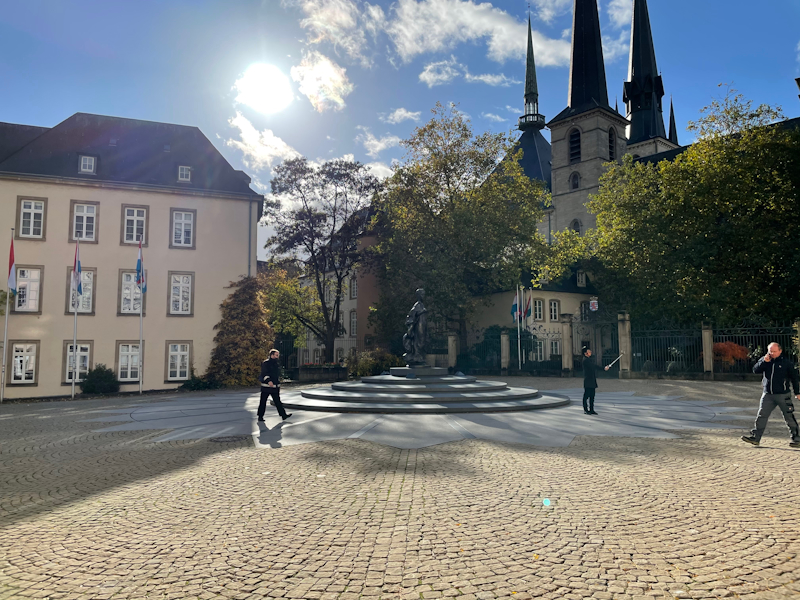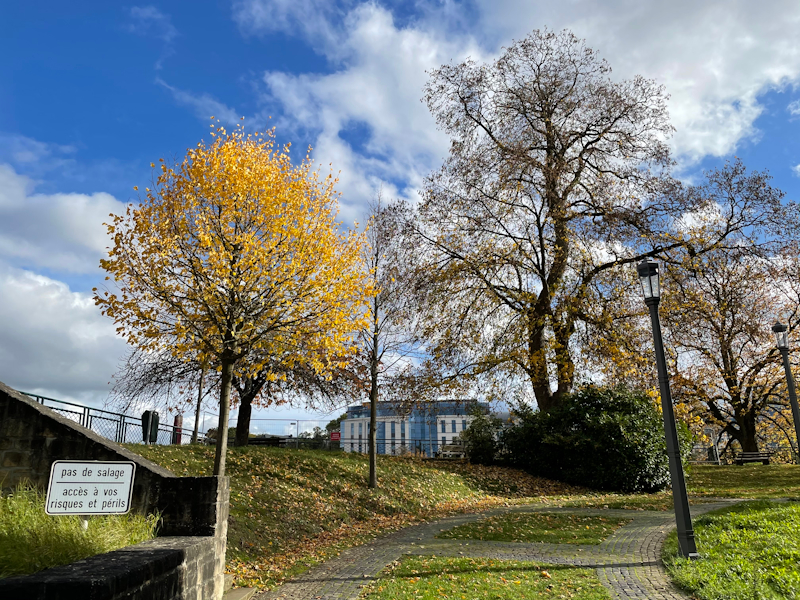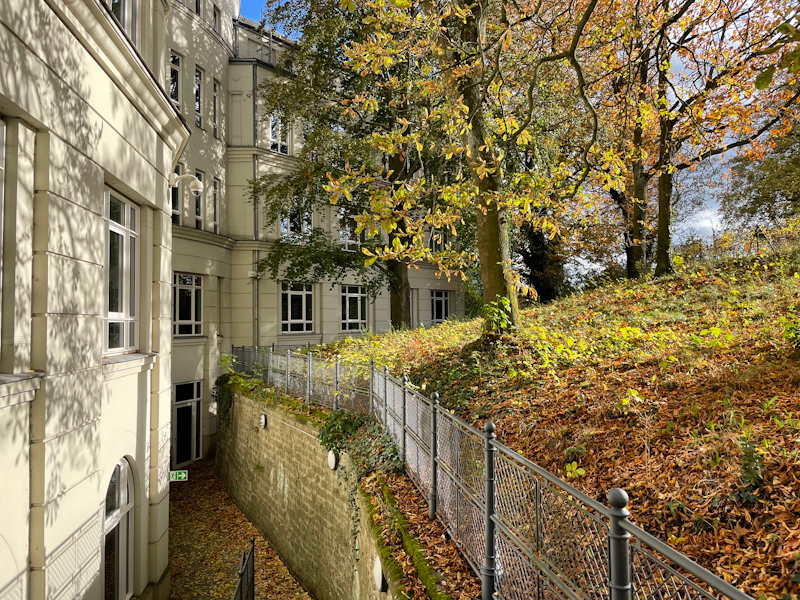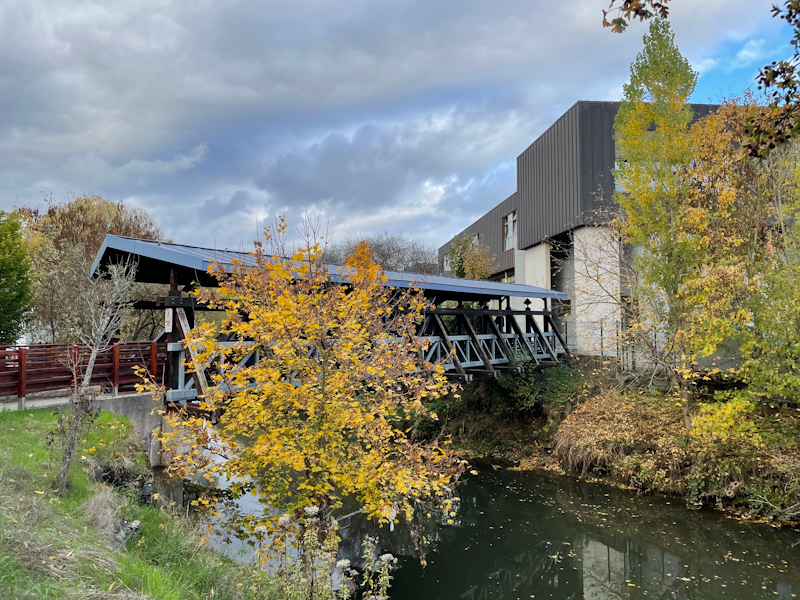The iPhone 12 & 12 Pro Review: New Design and Diminishing Returns
by Andrei Frumusanu on November 30, 2020 8:30 AM EST- Posted in
- Mobile
- Apple
- Smartphones
- Apple A14
- iPhone 12
- iPhone 12 Pro
Camera - Daylight Evaluation
The iPhone’s 12 and 12 Pro’s camera setup we’re reviewing today isn’t very exciting when looking at the paper specifications. Compared to the iPhone 11 Pro, the 12 Pro’s only real change is a new optics system on the part of the main camera, increasing the aperture from f/1.8 to f/1.6. The telephoto module and ultra-wide angle both remain seemingly the same at 12MP f/2.0 at 52mm equivalent, and 12MP f/2.4 at 13mm equivalent.
Where things might have changed more substantially is on the software processing side of things, where Apple has promised new improved HDR algorithms, enabled by the new processing power of the A14 SoC.
We’re limiting the comparison pictures here to the iPhone 12 Pro, with the iPhone 12 of course lacking the telephoto module but otherwise having identical hardware, the iPhone 11 Pro, as well as the latest Samsung flagship in the form of the Note20 Ultra, and S20+, as well as a Pixel 4 for the daylight pictures.
I’m including a Fujifilm X-T30 mirrorless ILC with an 18-55mm f/2.8-4 as a reference camera for the sake of colour accuracy comparisons. The shots here have been edited for dynamic range recovery and my best effort reproduction of the actual scenes.

[ iPhone 12 Pro ] [ iPhone 11 Pro ]
[ Note20 Ultra (S) ] [ S20+ (E) ]
[ Pixel 4 ] [ X-T30 ]
In this first scene I tried a worse-case scenario for the phones, shooting a contrasty scene against the sun, fully stressing the HDR algorithms of the cameras as well as the optics.
The new iPhone 12 Pro’s main camera doesn’t change the composition and exposure of the scene all too much compared to the iPhone 11 Pro, however we do see quite a bit better contrast. The sky’s discoloration around the sun is also less pronounced than on the iPhone 11 Pro, both signs that the new optics are of a high quality.
On the ultra-wide angle, we’re also seeing improved contrast – given that the hardware looks to be the same this would rather point out to an improved handling of HDR processing on the part of the new phone.

[ iPhone 12 Pro ] [ iPhone 11 Pro ]
[ Note20 Ultra (S) ] [ S20+ (E) ]
[ Pixel 4 ] [ X-T30 ]
The weather was quite cloudy during the shooting of these scenes but I tried my best to capture consistent shots between the phones. What’s immediately noticeable across all the shots of the new iPhone 12 Pro versus the 11 Pro is that while colours and general exposure is similar, the 12 produces higher contrast results which pop out more than on the predecessor.
On the telephoto module, oddly enough it feels as if things aren’t quite as detailed on the new phone as we’re seeing a HDR-like smudging of fine details such as the foliage and roof tiles of the scene. The main cameras are about the same, while on the ultra-wide angle I’d actually say the 12 Pro is able to preserve more details.

[ iPhone 12 Pro ] [ iPhone 11 Pro ]
[ Note20 Ultra (S) ] [ S20+ (E) ]
[ Pixel 4 ] [ X-T30 ]
In this next scene you’d be hard-pressed to differentiate the new iPhone. The only real difference on the part of the main camera I’m seeing are actually less defined shadows compared to the iPhone 11 Pro.
On the ultra-wide module, things change more dramatically, with much better detail retention on the new phone. Here we’re also seeing a large change in perspective correction between the two generations, especially in the corners of the image.
Compared to the competition, Apple doesn’t fare as well in terms of details as the Samsung phones are able to retain quite significantly more finer details throughout the scene while the iPhones seem to be smudging things out through the processing. Samsung’s HDR on the ultra-wide is also able to retain a better dynamic range, with more details in the shadows having been preserved.

[ iPhone 12 Pro ] [ iPhone 11 Pro ]
[ Note20 Ultra (S) ] [ S20+ (E) ]
[ Pixel 4 ] [ X-T30 ]
In this next scene it’s again visible that the new phone is able to showcase higher contrast levels. One thing that I don’t like very much on the Apple phones or the Pixel is the colour temperature which is quite too warm for this scene, being quite inaccurate compared to the real scene at the time and what the Fuji was able to capture. The Samsung phones aren’t quite as off and the best amongst the phones here.

[ iPhone 12 Pro ] [ iPhone 11 Pro ]
[ Note20 Ultra (S) ] [ S20+ (E) ]
[ Pixel 4 ] [ X-T30 ]
This is also a scene where the colour temperature of the new iPhone 12 seems to have gotten worse, being far too warm again compared to the actual scene as well as warmer than the 11, with the Samsung phones being far better in that regard.
HDR processing is much improved, especially noticeable on the ultra-wide of the new iPhone which retains a lot more details and handling of tones.

[ iPhone 12 Pro ] [ iPhone 11 Pro ]
[ Note20 Ultra (S) ] [ S20+ (E) ]
[ Pixel 4 ] [ X-T30 ]
Here again, the 12 produces a warmer picture than the 11, and veers off further away from the actual colour of the scene.
Apple opted to retain a traditional telephoto module setup on the new iPhone 12 Pro; what’s odd here is that again we’re seeing worse detail retention compared to the 11 Pro even though the hardware should in theory be the same.
This is especially visible when you have to user higher digital zooming, as the 5x magnification of the iPhone 12 Pro looks to me considerably worse than the 11 Pro. It’s as if there’s a heavy layer of noise reduction applied to the new phone’s camera processing on this new module.
Naturally, the 2x optical module can’t compete against some of the newer, more exotic camera solutions such as on the Note20 Ultra, but even the S20+’s 64MP unit using cropping and digital zooming vastly outperforms the telephoto module of the iPhone.

[ iPhone 12 Pro ] [ iPhone 11 Pro ]
[ Note20 Ultra (S) ] [ S20+ (E) ]
[ Pixel 4 ] [ X-T30 ]
This scene is a more noticeable improvement for the iPhone 12 Pro, with better HDR tone mapping as well as a better, more accurate colour temperature, although it’s still quite far off from reality, closest matched by the Note20 Ultra which has a near perfect reproduction.

[ iPhone 12 Pro ] [ iPhone 11 Pro ]
[ Note20 Ultra (S) ] [ S20+ (E) ]
[ Pixel 4 ] [ X-T30 ]
This last scene didn’t have a very high dynamic range as it was getting almost fully overcast; the new iPhone 12 behaved quite weirdly in terms of exposure of the foliage, as it lost saturation and is far too grey compared to the more accurate iPhone 11 shot. The Pixel 4 here had the best reproduction of the actual scene in terms of exposure and colours.
Daylight Conclusion: Better HDR, in Some Situations
Overall, the iPhone 12’s biggest changes in daylight captures can be summed around the fact that it has a new HDR algorithm, that in the majority of cases, produces better and higher contrast results. On the main camera, it’s a general positive although there’s a few scenes where for some reason the iPhone 12 processing fared off worse in terms of colour temperature and colour accuracy. Although the iPhone 12 performed well here overall, the main camera didn’t handle things as detailed or as accurately as the Note20 Ultra.
The ultra-wide angle seems to be universally improved this generation and that’s a much welcome change for the new devices: it showcases much better detail retention as well as better HDR processing. It’s still not quite at the same level as Samsung’s unit here but it’s much closer than before.
What’s quite disappointing on the new iPhone 12 Pro is the telephoto module. I felt that it universally was worse off than the 11 Pro due to the fact that it just couldn’t match the detail retention of its predecessor. I think this may be due to the new HDR processing that merges subsequent captures together. In any case, it doesn’t hold a candle to the competitions telephoto solutions which are significantly superior in hardware capabilities.










101 Comments
View All Comments
mrvco - Monday, November 30, 2020 - link
It was a good run since the OG iPhone launched, but I seem to have lost all interest in replacing smart phones. I've been using an XS Max (~work phone) and an LG V40 (~personal phone) for two years now and I'm still perfectly satisfied with both devices. They both do what I ask of them with little fuss and there just haven't been any new features or phones that have generated more than a passing interest for me.Bob Todd - Monday, November 30, 2020 - link
As someone who would sometimes change phones more than once a year, I've been in a similar place. We are getting to the point of "good enough" performance. Faster is always better, but high end (and even midrange) SOCs are pretty good these days. My 2 year old phone has 8GB of RAM, 256GB of storage, and a nice large display.I do think this generation of iPhones is interesting for a few reasons though. The Mini doesn't even have a good analogue in the Android world, and I'm excited that premium smaller form factor phones are a thing again.
FunBunny2 - Monday, November 30, 2020 - link
"The Mini doesn't even have a good analogue in the Android world, and I'm excited that premium smaller form factor phones are a thing again."it depends on use case. for those who use a smartphone mostly as a phone, then these Godzilla handsets are contraindicated. OTOH, if the use case is mostly watching video on the run, then the Max and similar make the most sense. Steve clearly intended the former, Mr. Market gave him a full body enema by telling him to shove those teeny, tiny thingees.
KPOM - Monday, November 30, 2020 - link
My mother and sister both opted for the 12 mini since they got tired of big phones. I’m sure they aren’t alone.GC2:CS - Monday, November 30, 2020 - link
Well is there any reason why LPDDR5 was not used over the entire lineup (including M1) ? Is there some hidden compromise with LPDDR5 ?So if CPU is improved quite a bit in regards to efficiency, why the GPU lacks an update ? Is it possible that newer node benefits the CPU more than GPU ?
I heard about new Pro Oleds having better viewing angles. This is something i would greatly appreciate. 11´s Pro do have quite big shifts in white - at screen edges it has greenish, bluish cast. Can somebody describe it a but more ?
I think this generation could be better. But 5G is quite monumental increse in RF complexity and imagining they did it with custom antena designs and thinner designs is quite remarkable.
For exemple three mmWave antenas were discoverd so far. One on the side next to the battery, one behind the motherboard and one under the notch on the front.
But on the other hand 5G sucked up all the effort for other upgrades like better bigger cameras, batteries, 120 Hz and so on.
I refuse to believe that the next one is iPhone 13. That is just so unlucky...
michael2k - Monday, November 30, 2020 - link
I think you answered your own question. The focus on 5G took resources away from lpddr5.mmm200 - Monday, November 30, 2020 - link
I had both X and Xs Max, wife has 11 Pro.I could tell you how good the new 12 Pro Max display is.
It is better than Apple MBP16 in both color and brightness stability! 2 weeks in I'm amazed still how good the Pro display is!
Don't like the oversaturated images made indoor. Just too much vibrance and saturation. Looks unnatural.
2.5x telephoto is great outdoors in sunny weather.
HDR video capture is mindblowing! Using 1080p30 and 1080p60 - looks great on LG OLED!
name99 - Monday, November 30, 2020 - link
It's quite possible that world LPDD5 production capacity was not yet large enough?My GUESS is that the memory controller can handle LPDD5, and the M1X machines will ship with it (and those will be in low enough volume that it's not an issue).
I was surprised that the M1 Macs did not, but presumably Apple concluded it made no engineering sense -- they are clearly fast enough as is, so why not hold something in reserve to make the M1X machines look even better when they ship?
vFunct - Monday, November 30, 2020 - link
Why do you do camera tests without a SINGLE shot of a human being? You know, because how everyone uses phone cameras to take pictures of people at parties and other social events?Are you unable to find anyone willing to have photos taken?
michael2k - Monday, November 30, 2020 - link
Taking pictures of people aren't actually important for the test scenarios:Daylight evaluation is measuring the sensor and software in their ability to balance contrast, dynamic range, shadows, details, and color (and of course there were some people in those pictures)
Low light evaluation is evaluating how well the software can enhance the image without sacrificing color information, creating unusual color casts, capturing details, and balancing the light and darker portions of the pictures.
What you seem to be asking for is a review of https://www.anandtech.com/show/14892/the-apple-iph...">Portrait Mode? The 2018 https://www.anandtech.com/show/13392/the-iphone-xs...">Portrait Mode review was similarly brief (both less than 5 paragraphs!)